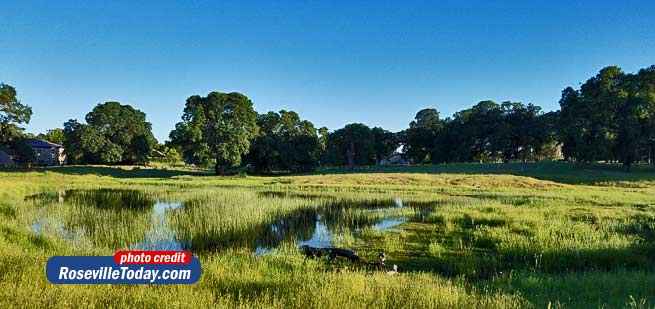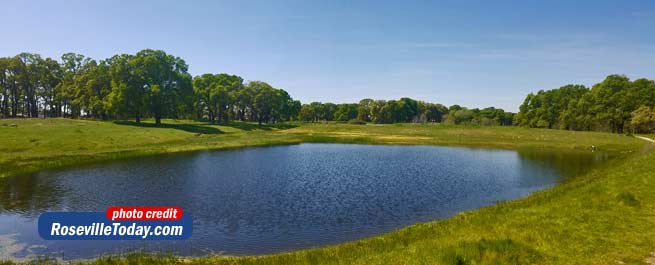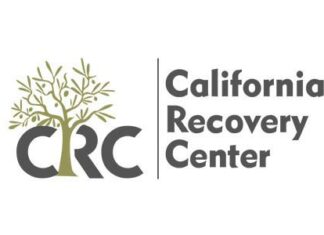Conserving Habitat for America’s Most Imperiled Species
The U.S. Fish and Wildlife Service recently announced nearly $79.2 million in grants to help conserve and permanently protect nearly 56,000 acres of habitat for 55 listed and at-risk species across 13 states through the Cooperative Endangered Species Conservation Fund. The grants will be matched by over $49.3 million in partner funds.
In the California-Great Basin Region, the Service will deliver more than $34 million to California and Nevada.
$5.2 million dollar in grant funding provides for the acquisition and permanent protection of approximately 573 acres of vernal pool and wetland habitat in Placer County.
Biden-Harris America the Beautiful initiative
“Using science as our guide, the Biden-Harris administration’s America the Beautiful initiative is about pursuing a collaborative and inclusive approach to conservation. The significant funding announced today furthers our promise to conserve and restore America’s lands and waters for the benefit of all,” said Secretary of the Interior Deb Haaland.
“These grant awards will support numerous state efforts aimed at building and strengthening vital conservation partnerships…”
Paul Souza, U.S. Fish and Wildlife

“I applaud the Service’s continued effort to work hand-in-hand with states and private landowners to improve habitat and connectivity.””Our valuable partnership with states is critical to our success in conserving and recovering threatened and endangered species,” said Paul Souza, Regional Director for the U.S. Fish and Wildlife Service’s California-Great Basin Region. “These grant awards will support numerous state efforts aimed at building and strengthening vital conservation partnerships with local groups and private landowners to benefit threatened and endangered wildlife and plants.”
Awarded via Grant Programs
CESCF land acquisition funding to states is awarded through two nationally competitive grant programs: the Recovery Land Acquisition Grant Program, which provides funds for the acquisition of habitat in support of Service-approved recovery plans; and the Habitat Conservation Plan (HCP) Land Acquisition Grant Program, which provides funds to acquire habitat for listed and at-risk species to complement conservation strategies of approved HCPs.
In Placer County
California will receive $5.2 million from the HCP Land Acquisition Grant Program for the acquisition and permanent protection of approximately 573 acres of vernal pool and wetland habitat in Placer County.
This acquisition contributes to the Western Placer County Habitat Conservation Plan and Natural Communities Conservation Plan goal to preserve more than 50,000 acres of natural land in the county. This piece of land will benefit listed and at-risk species, including vernal pool fairy shrimp, Western spadefoot toad, bald eagle, vernal pool tadpole shrimp, Western pond turtle and valley elderberry longhorn beetle.
More projects approved for California and Nevada this year include:
- California will receive $11 million under the HCP Land Acquisition Grant Program to enable the acquisition of 384 acres of the Banning Ranch property located in West Newport Beach where the Santa Ana River meets the Pacific Ocean. The last large parcel of unprotected coastal open space remaining in Southern California, Banning Ranch supports a mix of coastal wetland, riparian woodland, coastal bluff sage scrub, shortgrass grassland and vernal pool communities. The property complements the County of Orange Central and Coastal Natural Community Conservation Plan/Habitat Conservation Plan by conserving land contiguous with the HCP Reserve and benefiting covered listed species such as the coastal California gnatcatcher, least Bell’s vireo, San Diego fairy shrimp and Pacific pocket mouse.
- California will receive $12.6 million under the HCP Land Acquisition Grant Program to enable the acquisition of nearly 97 acres located with the City of Rancho Palos Verdes. Acquisition of the property will conserve important habitat for the federally listed coastal California gnatcatcher and Palos Verdes blue butterfly as well as the cactus wren covered under the Rancho Palos Verdes Natural Community Conservation Plan/Habitat Conservation Plan. The properties comprise the only remaining unprotected linkage areas for these species on the Peninsula and contribute to the long-term functionality of the NCCP/HCP Preserve lands by providing an important connection between patches of conserved habitat.
- California will receive $2.1 million from the HCP Land Acquisition Grant Program for the acquisition of nearly 304 acres of the Crestlake property located between the communities of Crest and Alpine. The acquisition of the Crestlake property will complement and greatly enhance the existing San Diego Multiple Species Conservation Plan by securing key regional wildlife linkages and preserving core areas of habitat. Covered species benefiting from the acquisition include the federally threatened coastal California gnatcatcher, endangered least Bell’s vireo, and federally threatened and state endangered Encinitas baccharis, and the at-risk western pond turtle.
- California will receive $1.8 million under the Recovery Land Acquisition Grant Program for the San Benito County Conservation Easement. The goal is to permanently protect over 4,500 acres on a privately owned working cattle ranch via voluntary sale and purchase of a conservation easement. The property California condors actively use the ranch for roosting and foraging. The ranch contains diverse habitat, including vernal pools which are known to be used by California tiger salamander and vernal pool fairy shrimp.
- Nevada will receive $687,000 under the Recovery Land Acquisition Grant Program to support the acquisition of the 3,345-acre Disaster Peak Ranch straddling the state border in Malheur County, Oregon and Humboldt County, Nevada. This cross-jurisdictional and multi-agency partnership will promote the recovery of Lahontan cutthroat trout, a federally listed species. Acquisition of the Disaster Peak Ranch and subsequent restoration efforts will help achieve delisting criteria identified in the species’ recovery plan by enabling the establishment of an interconnected meta-population within the Quinn LCT Management Unit. The property is in ecologically high functioning condition and is expected to remain climate-resilient in the future.
- California will receive approximately $1.1 million under the Recovery Land Acquisition Grant Program to acquire the 30-acre Mesquite Ridge property located between the Santa Rosa and San Jacinto Mountains National Monument and a suburban development in Palm Springs. Conservation of the property is important to the Peninsular bighorn sheep’s long-term survival and recovery as well as maintaining connectivity of desert tortoise habitat in the Peninsular Ranges. The property supports Sonoran creosote bush scrub, and Sonoran mixed woody and succulent scrub habitat.
Earlier this year, the Service also approved approximately $8.2 million in grant awards in support of HCP planning efforts across 17 states under the HCP Planning Assistance Grant Program. Funding awarded through this program may be used to support the development, renewal or amendment of HCPs. Eligible activities include document preparation, public outreach, baseline species surveys, habitat assessments, inventories and environmental compliance.
Projects approved earlier this year include:
- Salinas River HCP $1,000,000
- San Benito County HCP $976,100
- San Diego Regional Butterflies HCP $650,000
- Sonoma County Regional HCP $607,366
- Santa Clara Valley HCP Amendment $1,000,000
The ESA provides a critical safety net for North America’s native fish, wildlife and plants. The Service is working to actively engage conservation partners and the public in the search for improved and innovative ways to conserve and recover imperiled species. To learn more, visit www.fws.gov/endangered.
The U.S. Fish and Wildlife Service works with others to conserve, protect, and enhance fish, wildlife, plants, and their habitats for the continuing benefit of the American people.
(21+ years strong)
Welcome to the brighter side!
Get in front of local customers! 24/7 (365)























